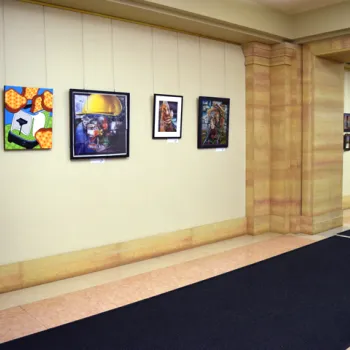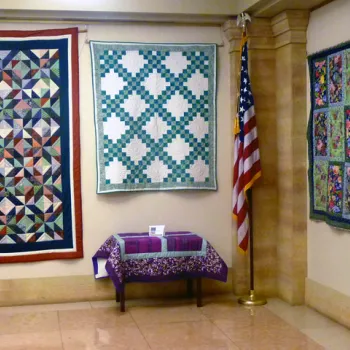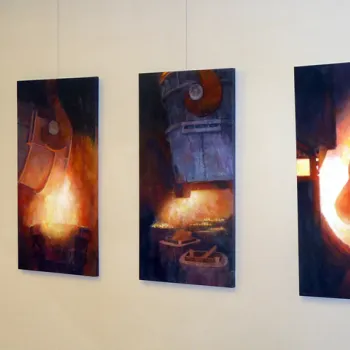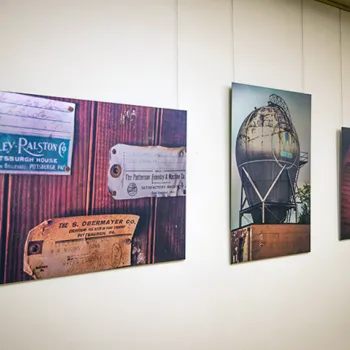Making a stately federal courthouse seem warm and welcoming to the public can be a challenge. In the Western District of Pennsylvania in Pittsburgh, a strong interest in art has led to a rotating schedule of art exhibits that has brightened a space once austere and cold, while increasing public visits to the courthouse.
Local artists feature their work in the courthouse security entrance, lightening the mood for visitors and providing a reliable venue for the arts community. Court staff began booking artists following a completed courthouse renovation in 2010. Currently, the space is booked through early 2016, with a list of potential artists continuing to request display space after that time.
Rounding out an active outreach program, the art displays generate “a better public perception of the court and the building that houses it,” said Deputy Clerk Mike Palus. “Making our space less intimidating to jurors and other visitors is a good thing.”
The art displays are an expansion of the Western District’s already active community outreach program. For years the district has provided courthouse tours for school and adult groups, and a modified version of the Open Doors to Federal Courts initiative, which brings middle school students into the courthouse in the fall of the school year, and high school students in the spring.
A driving force in creating the gallery was the court’s late Chief Judge Gary L. Lancaster. He also oversaw the courthouse renovation, which created long blank walls immediately inside the building entrance.
Courthouse exhibits rotate quarterly, and all artists are local, with some of them publicly displaying their work for the first time. In fact, court employees and their families, including judges, were the featured artists during a recent display.
While the court has hosted art displays in varying media, the emphasis has been on pictures. Most pieces have highlighted western Pennsylvania history or landscapes, but other art includes still lifes, portraits, and abstract pieces.
Palus said the involvement of interested judges is essential. Three judges sit on the Community Outreach Committee, which has up to a dozen members who are active in contacting art schools and community artists to attract new talent. Court staff and the Outreach Committee hope to add a juried show to the display cycle over time.
Occasionally, a featured artist may schedule a public reception to increase visibility for their art. While artists cannot sell their art in the courthouse, they may share their contact information with printed materials in the viewing area, as well as on the Community Outreach page on the court’s website.
All in all, “the program is a win-win,” says District Judge Cathy Bissoon, a member of the Community Outreach Committee. “We are able to display beautiful works by local artists in our lobby with little cost, and artists—both known and unknown—are afforded an opportunity to bring their art to audiences who may never have encountered them otherwise.”
Traffic through the Pittsburgh courthouse is brisk, with a steady stream of attorneys, litigants, jurors, and visitors entering the building on a daily basis. Artists who display their works enjoy access to this audience in a secure setting. Thus, the art program both benefits from that traffic and enhances it.
Sharing art more broadly with the public in their local courthouse is “a great way to fill blank space and really helps humanize courthouses for the community,” Palus said. “It’s been a terrific expansion to our community outreach program.”
Subscribe to News Updates
Subscribe to be notified when the news section is updated.




